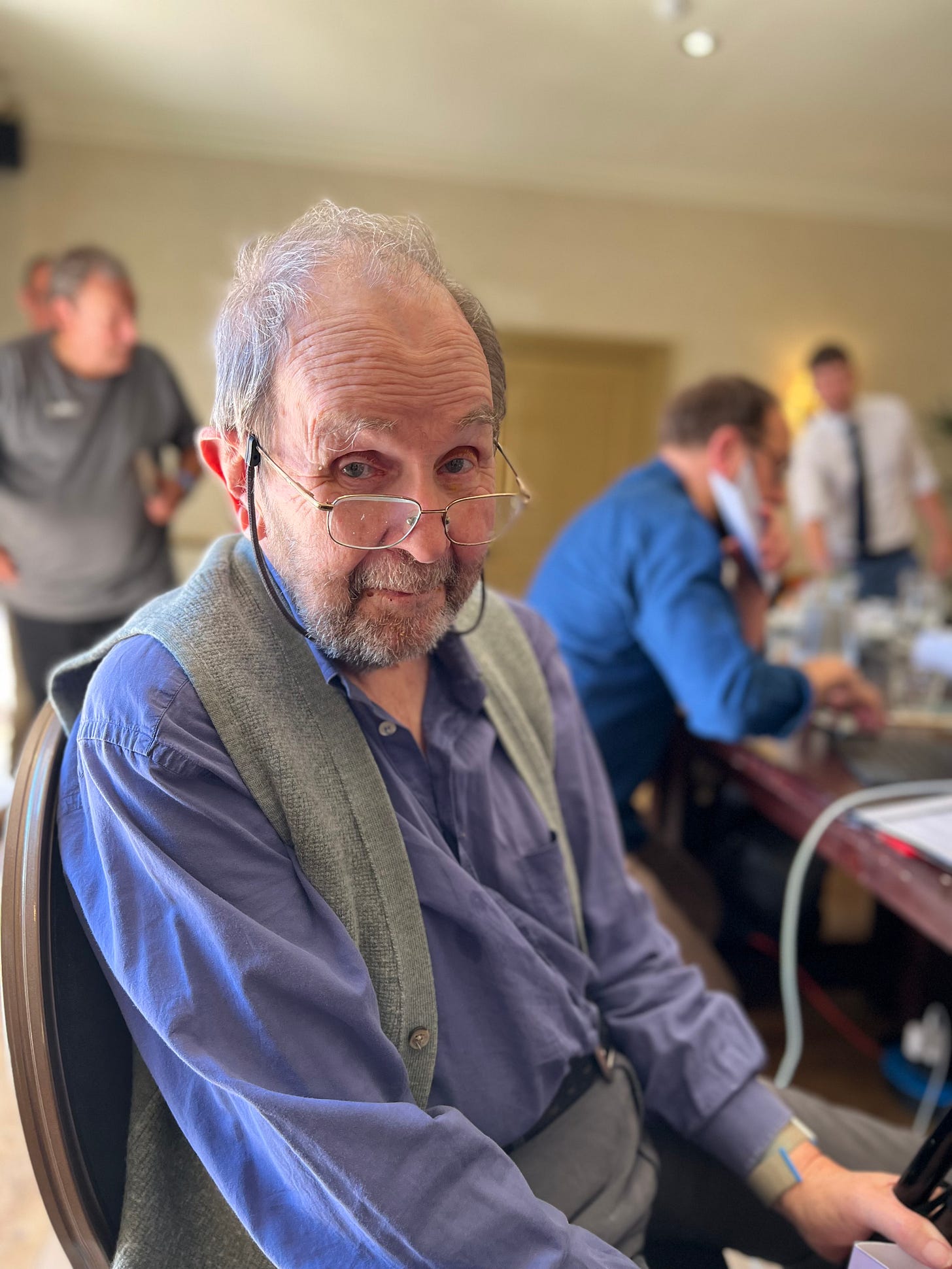My recent post Alzheimer's - hope, hype and the here and now contrasted the excitement around new Alzheimer’s drugs which may not be available for years with a technique that is available to help people with dementia right now by giving them access to personalised media that sparks memories. Michael Blakstad, the 83 year old founder of Media versus Dementia and the inspirational former editor of the BBC’s Tomorrow’s World, wanted to put a comment at the bottom of the piece. But I thought his views deserved greater prominence so I said I would publish them as a guest post:
Rory, in your splendidly even handed comparison of the publicity given to Eli Lilly’s recent launch of Donanemab and the alternative, non-pharmaceutical, approach favoured by Professor Carare, Media versus Dementia (which I have developed over eighteen months), I fear that, by juxtaposition, you may have given the impression that MedvDem has been the beneficiary of the Alzheimer’s Society’s “recognition of the need for this kind of innovation while the expensive hunt for wonder drugs continues …” or indeed of the Longitude Prize, established to support such "assistive technologies". In fact, the opposite is the case. We have received no funding apart from my own bank account and private donations by a number of friends and supporters.
MedvDem has, nonetheless, continued to develop the premise that personalised (digital, often interactive) media can stimulate the brains of people with dementia; it is based on nearly three decades of research by Arlene Astell, Professor of Neurocognitive Disorders at the University of Reading, whose studies have established that media do trigger memories thought lost and improve the well-being of the cognitively challenged, and increase the range of topics which they can discuss with carers and families, It's a big subject; (for more information, visit www.mediavdementia.org.uk.)
That an internationally renowned clinical researcher into Alzheimer’s effects on the brain contacted us, as Professor Carare did in November, and encouraged our mixed-media, approach, was a terrific boost but it also increased the scope of our proposals. Pioneering production companies who had edited individual programmes for people living with dementia had learned that it costs more than most people can afford and would obviously be impossible on a national scale. However, Professor Astell had established that generic reminiscence footage could trigger responses as well as personal memorabilia, so part of our job would be to establish 'sweet spots' between personal and generic media and match these to as wide range of dementia sufferers as would still have the hoped-for effect We therefore propose a 'walled garden' of all media, music, quizzes, memorabilia etc from which an AI-driven content management system will select and personalise content for each subscriber, and to measure through a series of field tests how personalised it must be if it is to achieve Professor Carare's vision of 'halting, even reversing, the advance of neurodegenerative conditions, including Parkinson's' (from which, Rory, both you and I suffer). To this end, we were planning to operate pilots with statistically valid groups of people at different stages of dementia, both in their own homes and those in residential care
The first aim was to establish whether the projections in the right hand column of this (slightly glib) comparison chart are true; they have obviously yet to be tested. Nonetheless, it is inconceivable that the gap will be closed between the costs, side effects, range of suitable patients and ease of application of stimulating through media compared with the results of the 'mabs'.
I hope that families and carers of people with dementia will follow the example of leading care homes who are now encouraging their residents to use tablets and other devices to involve them in tunes, clips of films, favourite tv programmes and other media especially if they relate to the 'Reminiscence Bump years, when they were 15 - 30 years old. Unlike taking unproven drugs, it can do no harm and may well give both them and their carers moments of pleasure and stimulate fresh topics of conversation.
Alas, we lack the ha’porth of tar, compared with the budgets behind the well-publicised recent pilots and launches of Lecanomab and Donanemab,which is needed to bridge the gap between preparing the concept and delivering it. And at 83, with what they call 'co-morbidities' jostling for position, I don't have the time or mental ability to put my mouth where my money was.
Following Alzheimer's, hope, hype and the here and now, I emailed the Alzheimer's Society once more and this time it was promptly and courteously acknowledged.. I hope that AS will help us recruit a small team, or to find an existing enterprise which will take over the concept of Media versus Dementia and run pilots this year.... thank you, Rory, for making this possible.





Fascinating stuff! Thank you very much for this Rory, and Michael (whose name is so familiar from the days of watching Tomorrow's World in the 70s) more power to your respective elbows. All the work and effort put in by both of you is so admirable.
Really interesting approach and it is easy. See that this approach may significantly improve the quality of life for the “patient” but also prolong the connections for their loved one. Is here an opportunity to help with this and or fund it?